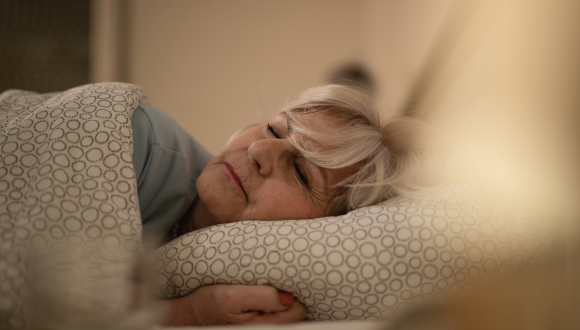Women over 55 who snore face elevated risk of sleep apnea, TAU researchers say

Condition can be life-threatening and contribute to a variety of health problems
Support this researchA new study from Tel Aviv University (TAU) found that women aged 55 and over who snore are at increased risk for sleep apnea, which can be fatal. The researchers warn that because the phenomenon occurs during sleep, women who suffer from sleep-disordered breathing are not even aware that they are suffering from the problem and that they are at increased risk for the condition.
The study was conducted by Dr. Alona Emodi-Perlman, Professor Ilana Eli, Dr. Jawan Sleiman, and Dr. Pessia Friedman-Rubin from the Department of Oral Rehabilitation at TAU’s Maurice and Gabriela Goldschleger School of Dental Medicine. The study was published in the Journal of Clinical Medicine.
The researchers examined two groups of Israeli women: relatively young women aged 20-40 (pre-menopause), and women aged 55 and over (post-menopause). They found that about 15% of the older women are at significant risk for sleep apnea, compared to only about 3.5% of the young women. In addition, they found that one in ten of the women who snore was at increased risk for sleep apnea, compared with only 1% among the women who do not snore.
Professor Eli explains that sleep breathing disorders range across a broad spectrum, from mild snoring to sleep apnea, the most severe and dangerous disorder, which causes a decrease in blood oxygen concentration and can be life-threatening. In addition, if the phenomenon is not diagnosed and treated in time, it can contribute to the development of a variety of systemic diseases, such as hypertension, cardiovascular disease, and stroke.
The difficulty in diagnosing sleep apnea is mainly due to the lack of awareness and under-reporting, Professor Eli says. Women suffering from the problem are unaware of it because it occurs during sleep. They are likely to report fatigue, headaches, masticatory muscle soreness upon awaking, or sleep problems like insomnia to their doctors, and it is important that the attending physician makes the connection, asks the right questions, and even seeks further diagnosis in case of suspected sleep apnea.
“The lack of early diagnosis is particularly noticeable in one of the target demographic groups: women over the age of 50, who suffer from an increase in the incidence of sleep-disordered breathing due to hormonal changes that occur during menopause,” Professor Eli continues. “We wanted to examine and characterize the phenomenon in this group in order to raise a red flag when necessary.”
The researchers also found a high correlation between the risk of sleep apnea and the tendency to snore, which was also more characteristic of the women over the age of 55. According to their findings, about 11% of the women who snore (one in 10 women) are liable to be at increased risk for sleep apnea. The researchers also note that grinding of teeth at night, high BMI, and a relatively large neck circumference are additional warning signs. In contrast, to their surprise, no significant differences were found between the two groups of women in terms of fatigue and drowsiness during the day, a significant phenomenon amongst men suffering from sleep apnea.
The researchers recommend that doctors and dentists “take note of symptoms that may indicate a risk of sleep apnea. Ask your older patients the relevant questions that no one is asking, such as: Do you snore? Do you suffer from headaches/neck pain when you wake up? Ask them to fill out a dedicated questionnaire to identify the risk of sleep apnea. Take note of the condition of the teeth: Might it indicate grinding of teeth at night? Note the thickness of the neck, which tends to expand in old age. And the bottom line is, if you have identified a high-risk patient, refer her to a sleep diagnosis specialist. In this way, we can diagnose women who are ‘under the radar’ due to a lack of awareness and under-reporting and provide them with appropriate and life-saving care.”